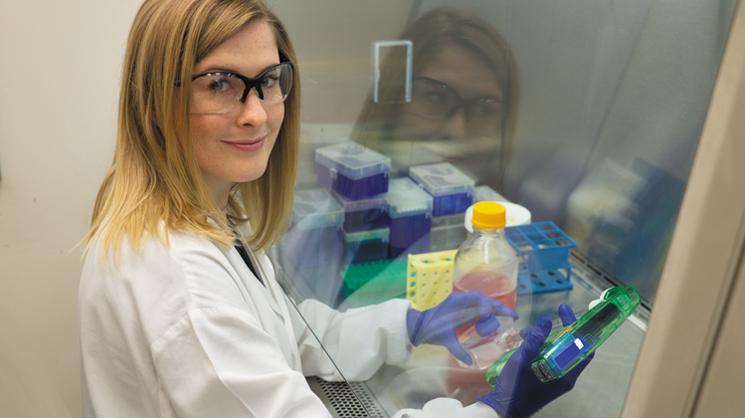Student uses 3D paper-based construct to sift out root causes of calcific valve disease
Rice University bioengineering graduate student Madeline Monroe has been awarded a competitive predoctoral fellowship by the American Heart Association (AHA) to engineer a multilayer 3D filter-paper construct to sift out root causes of calcific aortic valve disease (CAVD).
Monroe is beginning her fourth year of graduate research in Professor Jane Grande-Allen’s Integrative Matrix Mechanics Laboratory. The AHA fellowship will provide up to $53,688 of generous support.
Valvular interstitial cells (VICs) are primary cells that populate three distinct layers of the extracellular matrix (ECM) that makes up heart valve tissue. Monroe says studies have linked disruptions to cell-matrix organization to the activation of cell-mediated processes that lead to leaflet thickening and mineralization.
“A major obstacle in this cause-and-effect relationship is to fully understand the origins of the disease – that is the biochemical and mechanical aspects of the 3D environment.”
For this study, Monroe will use stacked layers of hydrogel-embedded filter paper to culture cells in a 3D environment that accurately mimics the native aortic valve environment. “This will be paramount toward the goal of analyzing the microstructural components and the signaling responses that spur pathological phenotypes,” said Monroe.
This direction, which is backed by preliminary studies using 3D filter-paper culture systems engineered by the Grande-Allen lab, will also study differential response of male and female-derived valvular interstitial cells to evaluate the influence of inherent sex and age-linked factors.
“The filter-paper constructs offer a high degree of control over several variables, including thickness, geometry, the density and types of cells embedded in the gels, and the type of hydrogels used in each layer,” Monroe added. “The combination of materials science and biological techniques also have potential for wide-reaching impacts in the development of pharmacological and tissue engineering therapies.”

